It’s been a dramatic start to October in Tecopa, where the desert sky has delivered both a rare soaking and an early taste of winter.
On October 9, residents watched dark clouds gather over the Amargosa Basin, bringing a flash flood warning and more than half an inch of rain — the third-largest rainfall in five years, according to Patrick Donnelly of the Center for Biological Diversity. “Well over half an inch so far,” Donnelly said, “making this the third largest rain event in five years, after Hurricane Hilary and the February 2024 atmospheric river.”
The downpour wasn’t evenly shared, though, with Tecopa receiving only 0.02 inches. One local described it best:
“Rain patterns are so interesting out here! I hit torrential rain on the way home from Pahrump — 127 was flooded between Shoshone and the Tecopa turn-off — and then I get home and it’s (almost) completely dry!”
Just days later, the National Weather Service issued a freeze warning for October 13–15, with overnight lows expected to dip below freezing for the first time this season. After months of triple-digit highs, the cool air and wet ground mark the official turning point toward the quiet, crystalline days of desert winter.
As the pools steam and the dunes glisten, locals are swapping out swamp coolers for space heaters, prepping gardens, and welcoming another season of change in the Amargosa Valley.
Community Town Hall: IMACA Program Cuts Discussion
Residents of southeast Inyo County are invited to attend a Community Town Hall Forum on Wednesday, October 22, at 4:00 p.m. at the Tecopa Community Center to discuss the ongoing impacts of cuts to Inyo Mono Advocates for Community Action (IMACA) programs.
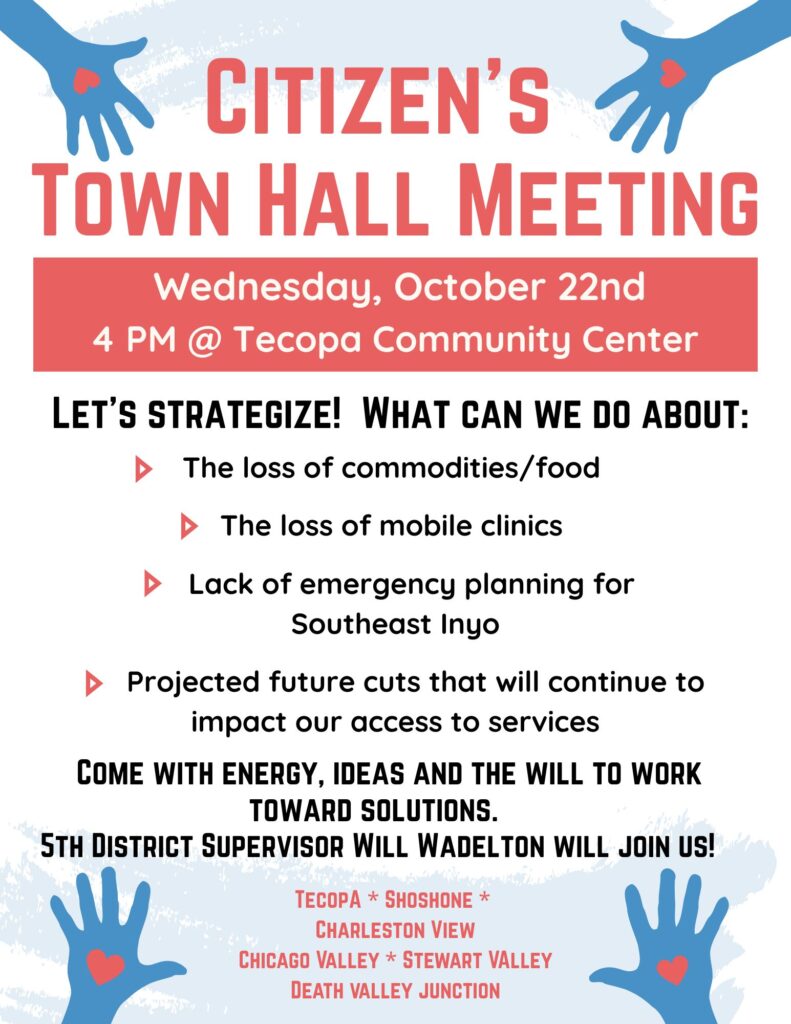
The meeting will address the loss of food distribution and other community support services that previously served Tecopa, Shoshone, and Charleston View, and explore ways to rebuild local support systems. Inyo County Supervisor Will Wadelton, who represents District 5, will be in attendance to hear concerns directly from residents and provide updates on county efforts to assess the situation and explore potential solutions.
Local representatives, volunteers, and community members are encouraged to participate in this open discussion aimed at ensuring continued access to essential resources in southeast Inyo County.
Fire on Bob White Way Contained After Multi-Agency Response
A structure fire broke out in Tecopa on the evening of October 13, 2025, drawing a swift response from multiple fire departments across the region.
According to the Inyo County Sheriff’s Office, dispatch received a report around 5:30 p.m. of a fire on the 400 block of Bob White Way. The Southern Inyo Fire Protection District (SIFPD) was notified and arrived on scene to find multiple structures and items on the property fully involved. With strong, gusty winds threatening nearby homes, mutual aid was requested from Pahrump Valley Fire and Amargosa Fire, both of which responded and provided critical support.
Fire crews battled the blaze into the night, finally extinguishing it and completing mop-up operations by approximately 1:30 a.m. on October 14. Fortunately, no injuries were reported, though the cause and origin remain under investigation.
Officials expressed gratitude to the many who assisted in the response, including community members, Inyo County Sheriff’s deputies, Amargosa Fire, Pahrump Valley Fire, Southern California Edison, and the Southern Inyo Fire Protection District team.
Local residents are collecting donations for those impacted by the fire.
China Ranch Thanks Volunteers for Firebreak Restoration
Down along the Amargosa River, the team at China Ranch Date Farm is extending heartfelt thanks to the Rubicon Vets group and local volunteers who recently spent time re-clearing the ranch’s firebreaks — a crucial safeguard against future wildfires.
“A big thank you to the Rubicon Vets group and volunteers for helping us to re-clear the firebreaks and keep China Ranch safe from another catastrophic fire. We are very grateful for their help!” the ranch shared.
The work helps protect not only the beloved date farm but also the surrounding canyon ecosystem, which has faced repeated fire threats in recent years. As the season turns cooler and winds pick up, the effort serves as a timely reminder of the community spirit and cooperation that help keep the Amargosa Valley resilient.
Amargosa Conservancy Welcomes Claire Vaye Watkins, Seeks Deputy Director
The Amargosa Conservancy is entering a new season of growth, announcing both a leadership opening and a notable new addition to its board. The conservation nonprofit — which safeguards the Amargosa River and its surrounding ecosystems — is hiring a new Deputy Director to help advance its restoration and advocacy efforts across the Mojave Basin.
In other big news, the Conservancy has welcomed acclaimed author and artist Claire Vaye Watkins to its Board of Directors.
“We’re thrilled to announce our newest board member, Claire Vaye Watkins!” the organization shared.
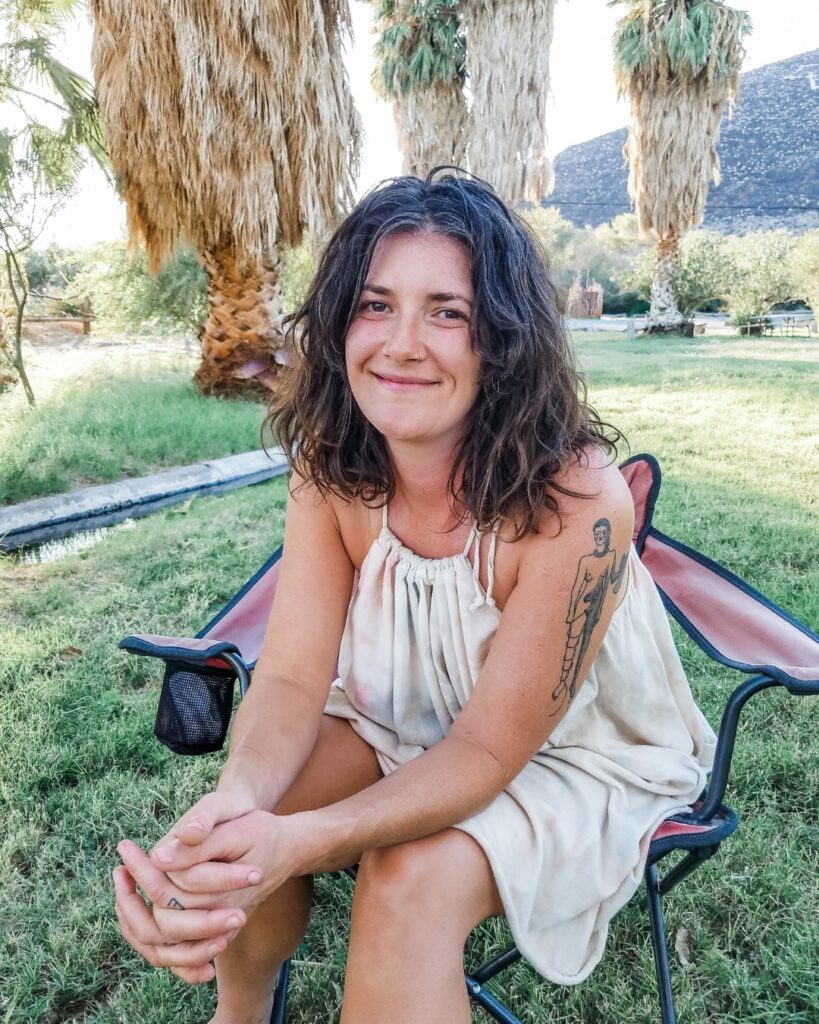
Born in Bishop and raised along the Amargosa River, Watkins is a writer whose deep connection to the desert runs through every page of her work. A Guggenheim and Lannan Literary Fellow, and one of Granta magazine’s “Best Young American Novelists,” she is the author of the novels Gold Fame Citrus, I Love You but I’ve Chosen Darkness, and Yellow Pine, as well as the story collection Battleborn, winner of the Nevada Writers Hall of Fame’s Silver Pen Award.
Her essays and fiction have appeared in The New York Times, The New Republic, The Nevada Independent, and the website of The New Yorker. When not teaching at the University of California, Irvine, Watkins divides her time between Tecopa and Orange County — where she continues to draw inspiration from the Mojave she calls her muse.
Her “perfect day,” she says, would include “a date smoothie at China Ranch after hiking the Amargosa Canyon Trail, catching up with friends over dinner at the Tecopa Triangle, then a night soak in the Borehole.”
The Conservancy continues its Summer Webinar Series later this month with
“Collaborative Riparian Restoration on the Amargosa River” —
Thursday, October 23, at 6:00 p.m.
Ghost Town Chronicles: Brent Underwood Tours Scotty’s Castle, Awaits County Green Light
Brent Underwood, the modern-day caretaker of Cerro Gordo, has ventured beyond his own mountaintop ghost town for a rare look inside another desert legend: Scotty’s Castle. Watch here.
In a new episode on his secondary YouTube channel, Ghost Town Two, Underwood joins a Death Valley National Park ranger for a behind-the-scenes tour of the storied mansion in Grapevine Canyon, still closed to the public after catastrophic flood damage in 2015.
The tour reveals some of the castle’s most fascinating mechanical secrets — including its original hydropower system, which generated electricity from a small stream and stored it in batteries to power the estate. Later, diesel generatorswere added to provide supplemental energy, particularly to run the castle’s impressive pipe organ, one of its most distinctive features. Viewers also get a look at the mansion’s unique burglar alarm system, an early example of home-security innovation.
Back at Cerro Gordo, Underwood shared updates on his ongoing effort to rebuild the American Hotel, which burned down in 2020. On his main channel, he said Inyo County has yet to approve his construction permits, despite plans having been submitted years ago.
“Recently, the county has started outsourcing some of the plan review to a third-party,” he said. “And this third-party is under no timeline, it seems like. Unfortunately, and once again, we are waiting for the county to let me build a hotel and bring some more tax base to their county.”
Underwood also noted the passing of Cecile Page Vargo, who, along with her husband Roger W. Vargo, was a respected historian, writer, and guide dedicated to preserving California’s mining heritage. The Vargos photographed, wrote about, and led tours through historic ghost towns, volunteering and working in both Bodie and Cerro Gordo.
Together, they authored Cerro Gordo, a richly detailed history chronicling the town’s rise, decline, and enduring legacy. The book recounts how, high in the Inyo Mountains between Owens Valley and Death Valley National Park, the silver boomtown grew to 3,000 people by the 1870s, later found new life through zinc mining, and ultimately became California’s best-preserved ghost town — second only to Bodie.
Their work continues to shape how modern visitors and historians understand the region’s mining past, ensuring that Cerro Gordo’s story endures long after the last load of ore left the Fat Hill.
Visitor Center Reopens Thanks to Local Support During Shutdown
In a welcome bit of good news for travelers and desert enthusiasts alike, the Furnace Creek Visitor Center in Death Valley National Park has reopened — even as the federal government shutdown continues.
Thanks to a $10,000 donation from the Death Valley Natural History Association (DVNHA), the nonprofit is temporarily funding daily operations of the visitor center in partnership with the National Park Service. The contribution ensures that guests still have access to information, interpretive exhibits, and the onsite bookstore, all vital for safe and informed exploration in the park.
DVNHA emphasized its commitment to supporting both visitor enjoyment and safety during the closure, noting that the donation allows the park to maintain a basic level of service and education despite federal funding interruptions.
To help sustain this effort, the association encourages public contributions to the DVNHA Unrestricted Fund, which directly supports park programs and operations.
👉 Donate to the DVNHA Unrestricted Fund
Heart of the Art: The Written Word — Death Valley Institute Online Gala
This month, the Death Valley Institute invites readers, writers, and desert dreamers alike to join its upcoming online celebration of creativity and storytelling: Heart of the Art: The Written Word, running October 20–29, 2025.
The virtual event features four Zoom sessions, each held from 5:00 to 6:00 p.m., offering an intimate look into the motivations, joys, and challenges of writing about the desert. Participants will hear directly from authors and educators whose work captures the stark beauty and complexity of life in and around Death Valley.
Event Lineup: The Essence of Writing
- October 20 – Robin Flinchum: Journalist and author of Red Light Women of Death Valley
- October 22 – Ruth Nolan: Poet, author, and editor of No Place for a Puritan: The Literature of California’s Deserts
- October 27 – Jeff Birkenstein: Professor of Writing and Literature, Centralia College
- October 29 – Roundtable Discussion: Birkenstein, Nolan, and Flinchum in conversation
The series is completely free and open to the public. Registration is available via Eventbrite.
As author and participant Robin Flinchum noted, “It’s free — and you don’t even have to leave the house!”
The Death Valley Institute, a program of the Death Valley Natural History Association (DVNHA), hosts educational events and field courses year-round, from expert-led nature hikes to book clubs and history seminars. While this online series is open to all, DVNHA members receive first access to many of these limited-space programs throughout the year.
Explore the Basin: Fall Events with Friends of the Amargosa Basin
The Friends of the Amargosa Basin (FAB) are inviting residents and visitors to step outside and connect with the desert this fall through two engaging educational events highlighting the unique landscapes and creative spirit of the Amargosa Basin.
Geology Walkabout – Saturday, October 25
Join FAB for a Geology Walkabout led by geologist and board member Darrel Cowan on Saturday, October 25, 2025, from 8:30 a.m. to 12:30 p.m. Participants will meet in front of the Shoshone Museum before heading into the field to explore the region’s fascinating geology. The walk will examine the forces that shaped the Basin’s distinctive canyons and mineral formations, offering insights into one of the most dynamic desert landscapes in the Southwest.
The event is free and open to the public. Attendees are encouraged to bring water, sturdy shoes, and sun protection.
Nature Journaling Workshop – Sunday, November 9
FAB will follow up the walkabout with a Nature Journaling Workshop on Sunday, November 9, from 9:00 a.m. to 12:30 p.m. in Shoshone, hosted by Friends of the Amargosa Basin and facilitated by local naturalist Teresa Skye.
This hands-on workshop invites participants to learn the art of observing and documenting nature through drawing and writing, guided by Skye’s professional instruction. All skill levels are welcome, and materials will be provided. The session will include both classroom-style learning and a field walk in the stunning fall landscape of the Amargosa Basin.
Light snacks and refreshments will be available; participants should plan their own lunch. Registration is free, though contributions are welcome. Those who sign up will receive additional details about the day’s program, what to bring, and what to expect.
📍 Register here: events.humanitix.com/nature-journaling-with
About the instructor:
Teresa Skye has led numerous nature journaling workshops at Ash Meadows National Wildlife Refuge, Basin & Range National Monument, and with the Pahrump Arts Council, Master Gardeners, and Death Valley National Park. She brings both a deep understanding of local ecology and an artist’s eye for capturing the desert’s subtle beauty.
FAB encourages the community to visit their website and social media pages for more information on upcoming programs and to join in celebrating the arrival of fall across the Amargosa Basin.
Tecopa Mines Launches Fundraiser to Build Museum and Preserve Mining History
After a productive volunteer weekend, Tecopa Mines has launched a new fundraising effort to continue restoring the historic mining complex that sits in the hills above Tecopa. The site’s owner and caretaker, Ross Dykman, is seeking to raise $15,000 through a GoFundMe campaign to help complete the next phase of work — including the construction of a small on-site museum to house mining artifacts and tell the story of the region’s 19th- and 20th-century mining heritage.
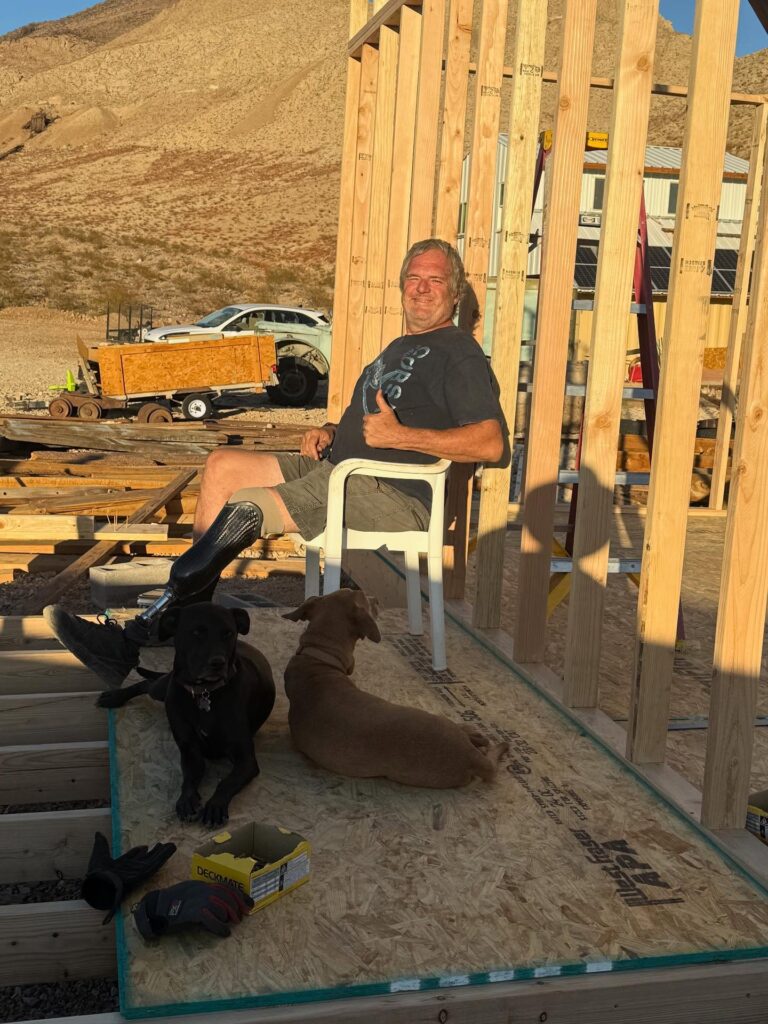
Dykman, who purchased the old War Eagle, Noonday, Columbia, and Grant mines in 2021, has spent the past three years stabilizing structures, improving access roads, and restoring ladders, timbers, and equipment with the help of local volunteers. His goal is to preserve the site for future generations while showcasing the area’s vital role in the industrial and cultural history of Death Valley and the American West.
The new fundraising phase focuses on completing a dedicated museum structure that will display the collection of tools, maps, photographs, and artifacts gathered over the past few years. Once finished, visitors will be able to explore exhibits and even peer safely into the reconstructed Columbia Shaft through a steel-grate floor built into the new building — offering a rare glimpse into an open mine where generations of miners once extracted lead, silver, copper, iron, and zinc.
The lights are already in place, and much of the work has been powered by volunteer labor. However, the cost of materials — particularly lumber — remains a challenge. Dykman hopes to finish the building in time for the 2026 visitation season, turning Tecopa Mines into a sustainable, educational destination that honors the desert’s mining past.
Those wishing to contribute can visit the campaign at gofundme.com/f/restore-the-tecopa-mines.
BLM to Conduct Emergency Wild Burro Gather Near Beatty
The Bureau of Land Management (BLM) began an emergency wild burro bait and water gather on or around October 7, 2025, in and around the Bullfrog Herd Management Area (HMA), which surrounds the town of Beatty in Nye County.
The operation aims to reduce risks to public safety and private property caused by severe overpopulation of wild burros. According to the BLM, approximately 250 excess burros will be gathered and removed using temporary corrals stocked with water and hay to bait and trap the animals — no helicopters will be used.
The Bullfrog HMA spans 157,180 acres of public and private land. The designated management level for the area is 58 to 91 burros, but an April 2024 aerial survey estimated the current population at roughly 1,197.
The gather is consistent with Section 1333(b) of the 1971 Wild Free-Roaming Horses and Burros Act, which authorizes emergency removals to protect animal welfare and human safety. The BLM emphasized that operations will follow its Comprehensive Animal Welfare Program to ensure humane handling throughout the process.
Captured burros will be transported to the Axtell Off-Range Corral in Axtell, Utah, where they will receive veterinary care and be prepared for the BLM Wild Horse and Burro Adoption and Sale Program.
Due to the sensitive nature of bait-trap gathers, public access to trap sites will be restricted to essential personnel only.
More information and planning documents are available on the BLM National NEPA Register.
For adoption opportunities, visit blm.gov/whb, or contact Aimee Bollinger, BLM Wild Horse and Burro Specialist, at abolinger@blm.gov or 775-635-4187.
Major Nevada Solar Project Canceled Amid Federal Energy Policy Shifts
The Interior Department has canceled plans for Esmeralda 7, a massive solar and battery project that would have covered 118,000 acres of federal land in the Nevada desert near Tonopah, northwest of Las Vegas. Designed to generate 6.2 gigawatts of power—enough to supply nearly two million homes—the project was being developed by NextEra Energy and Invenergy, two major U.S. renewable energy firms.
The Bureau of Land Management quietly updated its website to reflect the cancellation without explanation, but the move appears tied to the Trump administration’s broader rollback of renewable energy initiatives on public lands. The administration has added new layers of political review for wind and solar projects, paused several large-scale developments, and opened investigations into wind farms—while continuing to approve oil, gas, and coal permits during the ongoing government shutdown.
Interior officials said the Esmeralda 7 proposal consisted of seven separate solar installations, and the developers could reapply for individual permits, though doing so would cause major delays.
The decision drew sharp criticism from Nevada lawmakers and clean energy advocates, including Senator Catherine Cortez Masto, who accused the administration of creating “chaos and confusion” through opaque policymaking. Governor Joe Lombardo, a Republican, had previously warned that new federal review requirements could stall renewable energy development critical to Nevada’s mining and technology sectors.
Esmeralda 7 had advanced under the Biden administration, which prioritized renewable energy as part of its climate agenda. Its cancellation marks a significant setback for large-scale solar development in the region and adds to mounting concerns that the administration’s energy policies are favoring fossil fuels over renewables.
Nature Note: A New State Snake Slithers Into the Spotlight
California has a new official state snake — the Giant Gartersnake (Thamnophis gigas), a wetland dweller whose recognition underscores the state’s growing focus on biodiversity and endangered species protection.
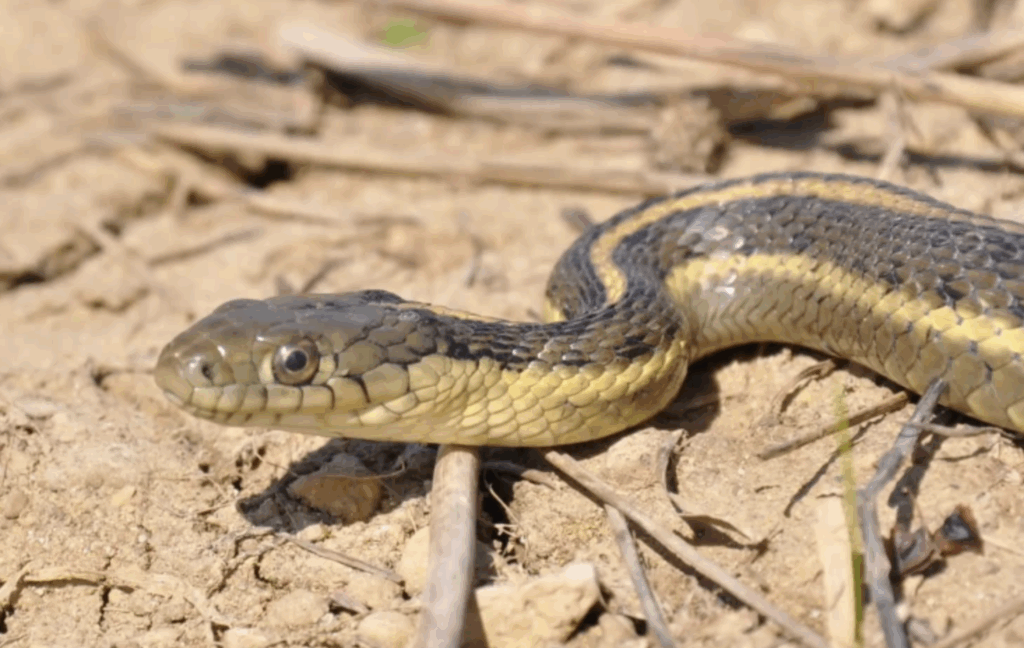
According to Friends of the Inyo, the designation celebrates a creature as elusive as it is essential. Found only in the Central Valley, the Giant Gartersnake is endemic to California — a native that thrives in wetlands, rice fields, and irrigation canals. Once widespread, its habitat has dwindled alongside the loss of freshwater marshes, leaving it classified as Vulnerable by the IUCN and Threatened under both state and federal protection.
Visually, it’s a striking serpent — olive to dark green, with yellow or orange stripes running the length of its keeled scales, giving it the rippled texture of the marsh waters it calls home.
While Tecopa sits far from the rice fields of the Central Valley, the announcement resonates with desert conservationists who know the fragility of rare habitats. From the Amargosa vole to the Tecopa bird’s beak, each local species tells its own story of survival in a changing landscape — and California’s newest state symbol is a reminder that even the most unassuming creatures deserve their place in the sun.
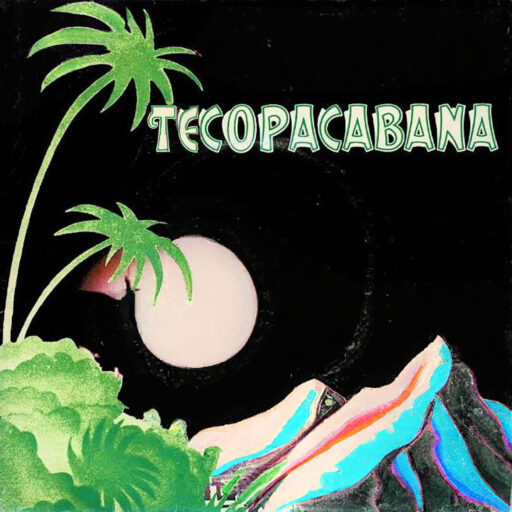
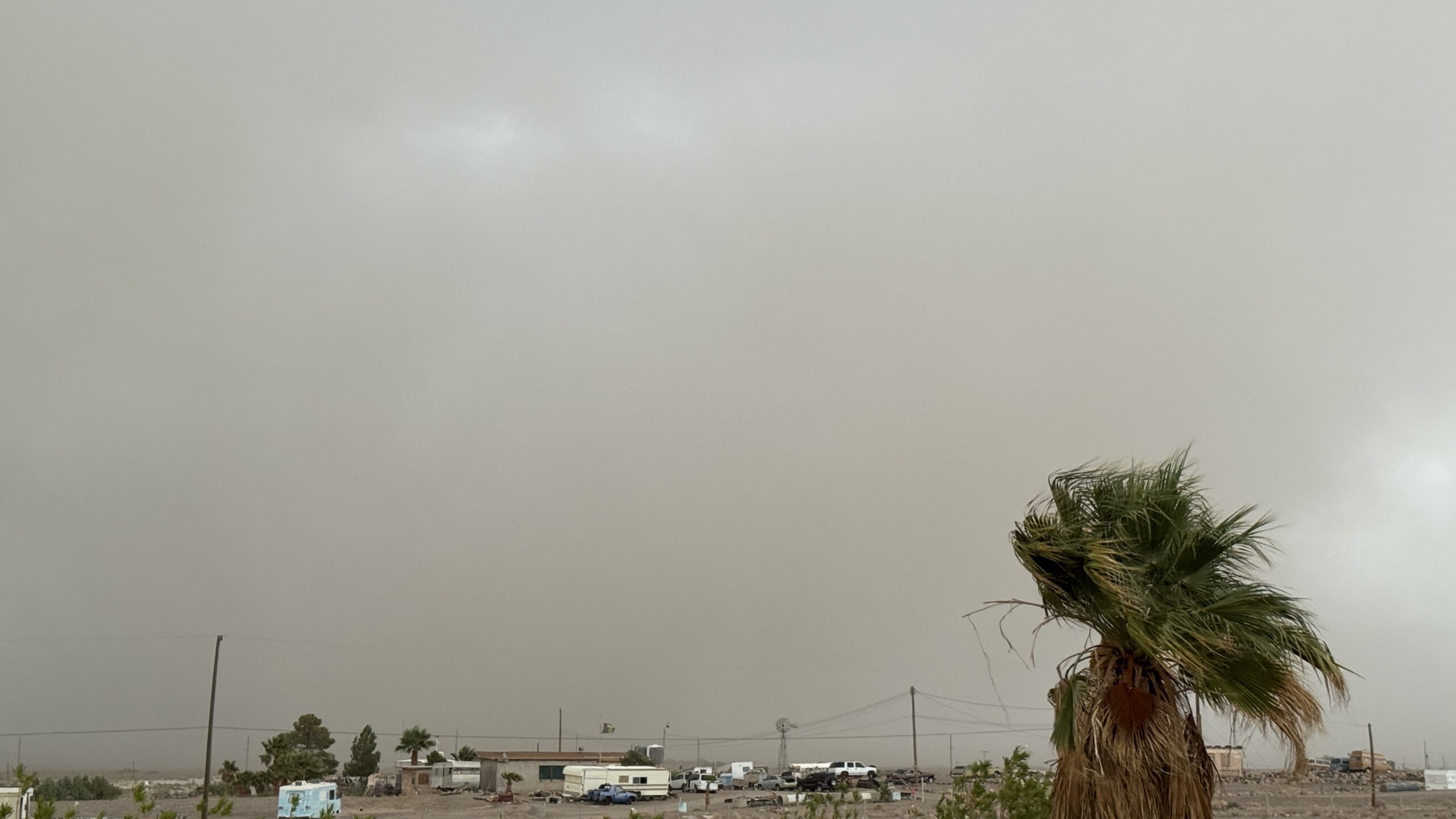
Leave a Reply